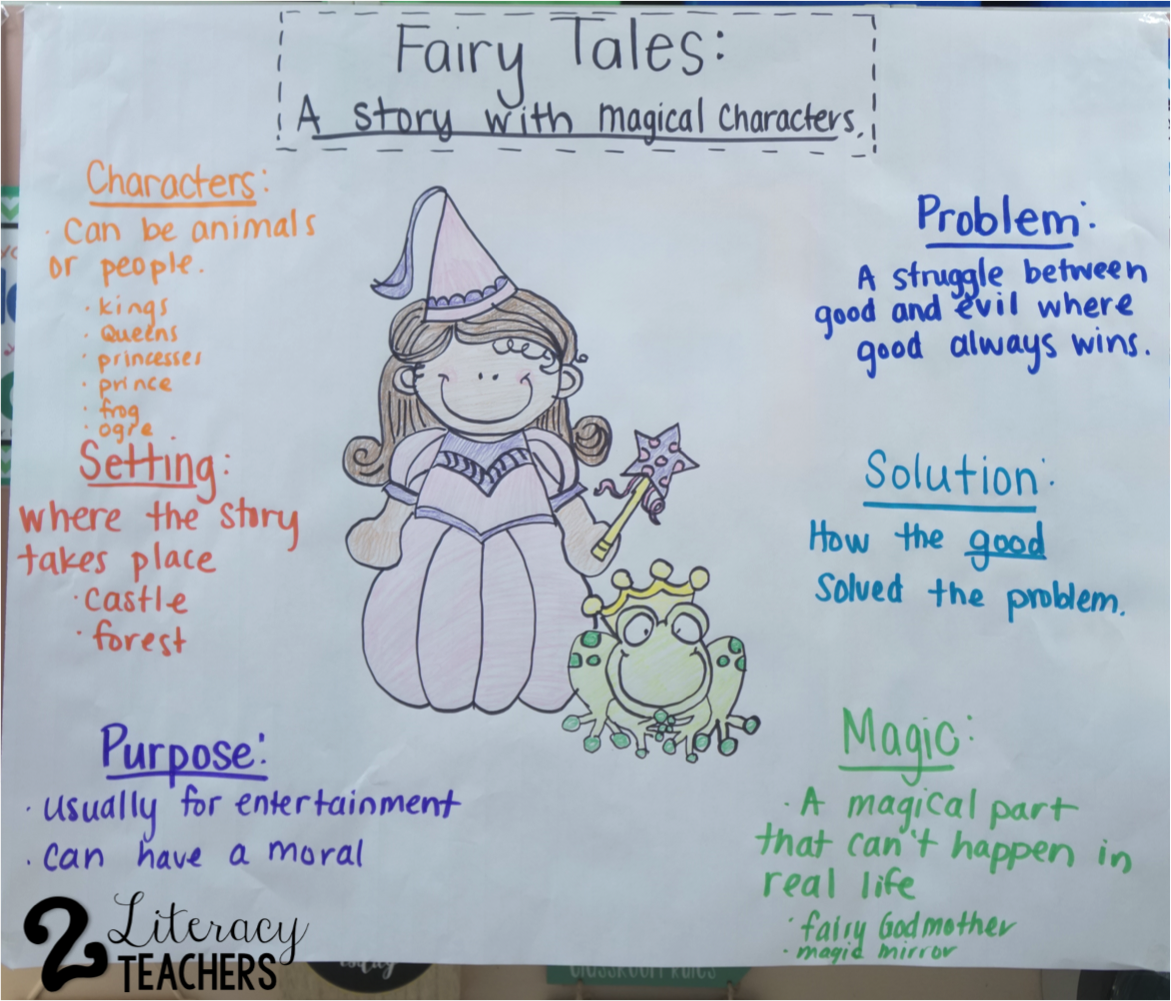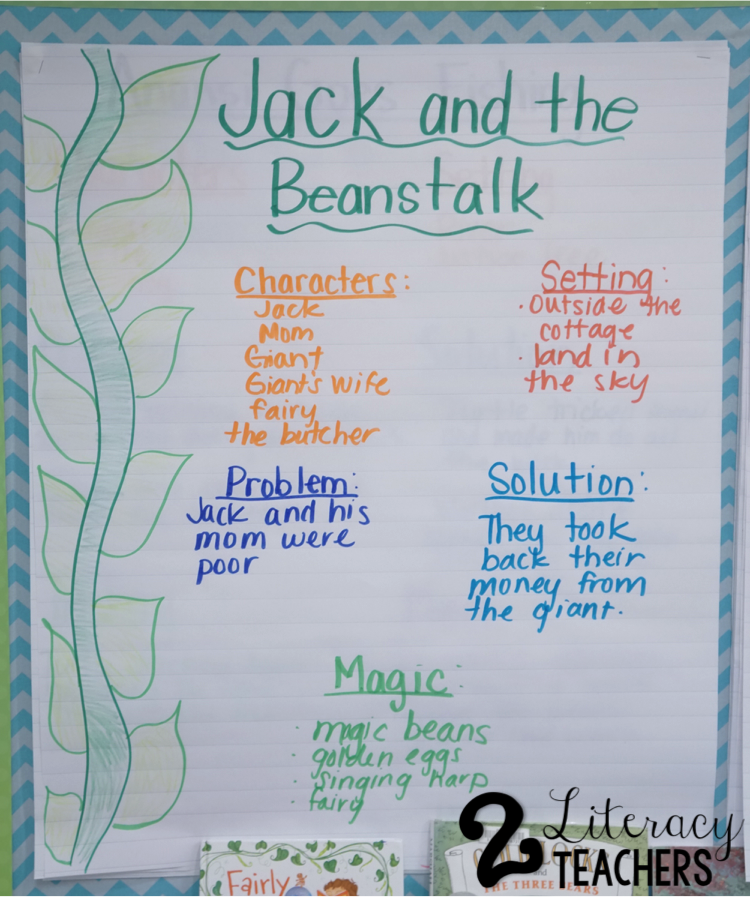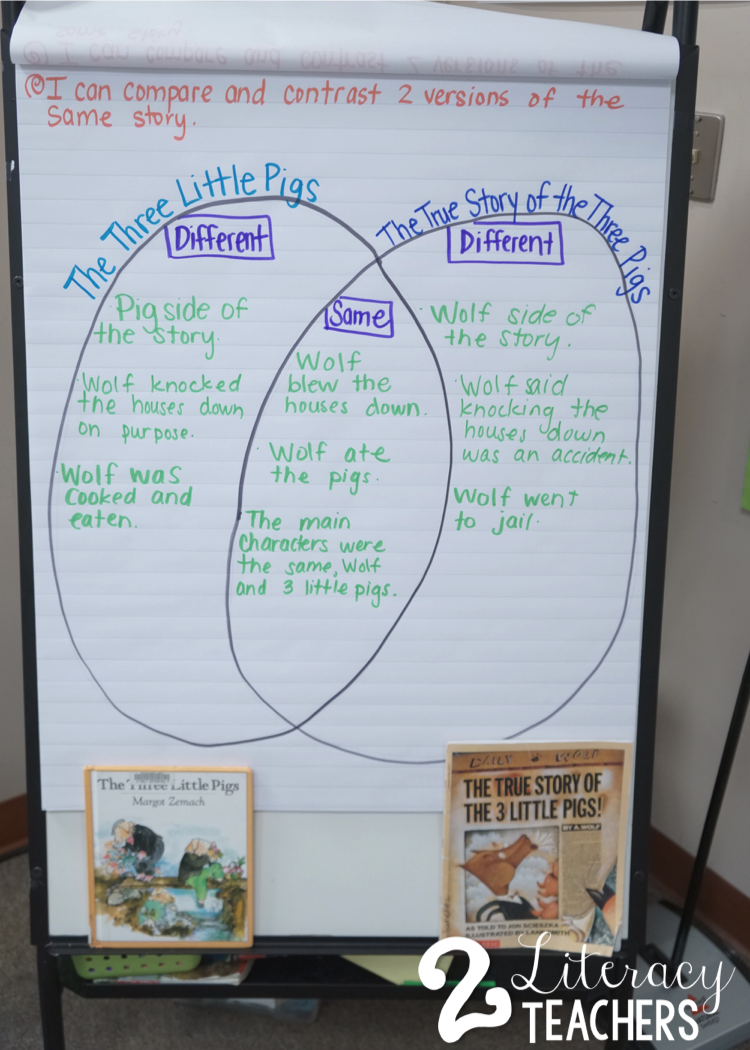Happy Sunday friends! We are having a bit of wild weather up here in the PNW so I hope you are somewhere with beautiful sunshine!
Today, I want to share with you how I use fairy tales to teach comparing and contrasting, RL 2.9. If you are looking for a way to teach this concept, look no more! Using fairy tales is the answer for you!

When I start teaching fairy tales, I always start with the elements. I like the kiddos to have a good foundation on what a fairy tale has and what makes it different from a regular fiction story. This helps us when we are comparing and contrasting. For example, knowing a fairy tale has a magical element, helps them to compare those elements when they are reading the different versions. This is the anchor that I use. It is similar to the fable anchor (see here) which helps them to compare the different types of stories.

Our fairy tales unit feeds into our writing. However, I front load the kiddos with different versions of fairy tales for a few days before we work on any of the writing portion. I want them to be able to compare and contrast the two versions of a fairy tale in one day, so I generally will read the original version during our slated writing time and the fractured version during our slated reading focus time. When I read the original version, we are looking just for the elements. This helps us to keep track of our thoughts on the text, as well as, gives us a way to reference the original version while we are reading the fractured version.

I have taught my kiddos two different organizers to use while comparing and contrasting. We use both the t-chart and the Venn Diagram. I favor the t-chart because the kiddos seem to understand the concept of it more clearly and it helps them to organize their ideas in a way that is less confusing. It also provides more writing space.

For this Jack and the Beanstalk chart, the kiddos worked with partners to decide one way the stories were the same and one way that they were different. They wrote them on the stickies and then stuck them on the chart. The reason I like this activity when we’re starting out is because we can read through the stickies and move (fix) the misconceptions. The kiddos have a hard time focusing on one story. So they will put, “in Jack and the Beanstalk the giant dies but in Jack’s Beanstalk Stinks, he doesn’t die.” I want the kiddos to keep them separate. By using the stickies, we can cross off and move them fairly easily. The t-chart provides us more space to do this.

When comparing two versions of The Three Little Pigs, we used a Venn Diagram. Please excuse the messy circles, another reason I like the t-chart! For this comparison, the kiddos drew a Venn Diagram in their reading spirals and wrote down their comparing and contrasting statements. When we work with the Venn Diagram, we really work on matching up the comparing. For example, “told the pigs side of the story, told the wolf’s side of the story.” When this idea clicks, they become comparing and contrasting superstars!!
There are so many amazing fairy tales that you can use to compare and contrast! Another thing that my team does, to help the kiddos with their listening comprehension, is that we will have the kiddos read a fairy tale and then watch a fairy tale. We give the kiddos the original version of Little Red Hen and then we watch Burro’s Tortilla’s on Tumblebooks. We do the same thing with Little Red Riding Hood and Isabella and the Hungry Coyote. If you haven’t tried that yet, you should. Adding the listening component steps up the game in comparing and contrasting.
I hope that you all have a fabulous week and Happy St. Patricks Day!!

